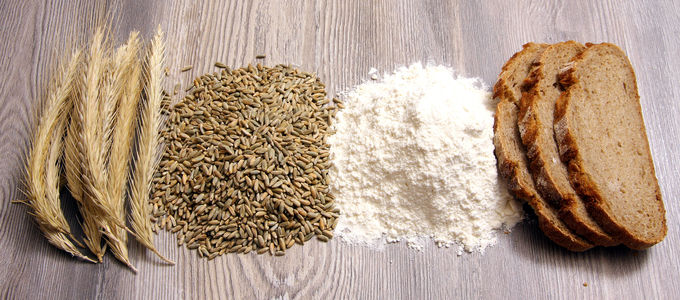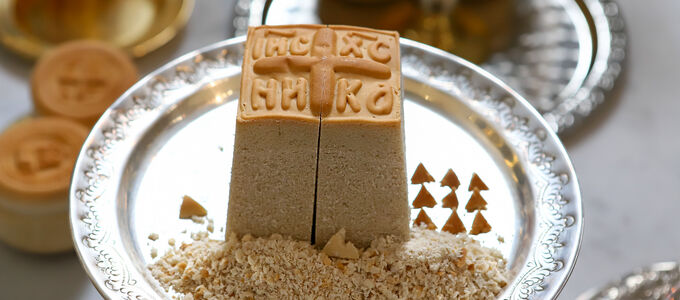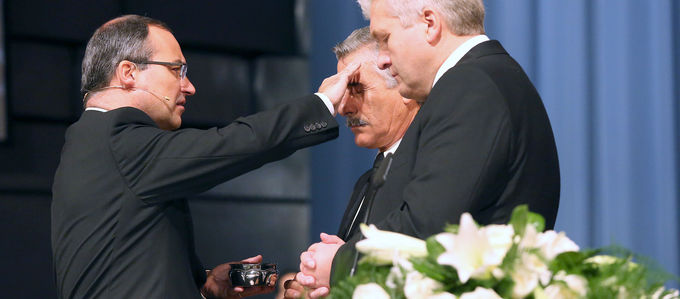
It all began as a simple table prayer and developed into a rich culture incorporating many different forms of expression. We’re talking, of course, about the celebration of Holy Communion. Where did it come from and where will it lead? Here are some similarities and differences.
Jesus left neither a script for the proper sequence of events nor any recipes listing the ingredients. But in memory of Him, Christians have prayed and eaten together from the start. Only later on did they begin to quote His words from the Last Supper. It was the first step on a long journey…
And here are the offshoots that have emerged since: hymns of praise, acts of repentance, the promise of forgiveness, thanksgiving to God, the Father, the preaching of the word, creeds, intercessions, the preparation of bread and wine, the words of institution, remembrance of Jesus’ activity, the invocation of the Holy Spirit, the devotion of the believers, reference to the community, prayers for the return of Jesus, the Lord’s Prayer, signs of peace, sharing bread, eating and drinking, praise, blessing, and mission. This collection of Communion rites is found in the celebrated Lima Text of 1982, the most far-reaching document of ecumenical rapprochement to date.
It starts with a tradition
The mother of this development is the Traditio Apostolica, the first church order with clear declarations concerning ministry and sacrament. This treatise dating to the middle of the third century defined the elements belonging to the Eucharistic prayer, namely the invocation of God, the Father (anaclasis), the commemoration of the death, resurrection, and ascension of Jesus (anamnesis), the plea for the activity of the Holy Spirit (epiclesis), and the concluding expression of praise (doxology).
By the seventh century at the latest, more prayers would come to be added: first and foremost, the Lord’s Prayer, but also the Sanctus, which combined the triple “holy” from Isaiah and the “hosanna” of the Psalms. The Agnus Dei (Lamb of God) was only able to assert itself in the Roman sphere of influence. It was here that the Catholic West and the Orthodox East soon went their own separate ways.
The Protestants sort out their response
The Reformation did not bring any new rites, but rather more of a reduction. The emerging Protestant Church adopted a great deal from the Catholic Church, but left off anything that did not correspond to its doctrine. This included, for example, the large celebratory host, which is visibly divided up for the congregation to depict the act of breaking bread in the liturgy.
The Protestants rejected such spectacles as elements of a priest-centred cult. Behind this are two theological questions: on the one hand, the question of whether a priesthood is needed as a mediator of salvation at all, and on the other, whether the sacrifice of Christ is repeated over and over again in the Lord’s Supper and whether the congregation is itself bringing a sacrifice.
“In Holy Communion, it is not only the body and blood of Christ, but also His sacrifice itself, that are truly present,” professes the New Apostolic Church in its Catechism (CNAC 8.2.13): “However, this sacrifice has only been brought once and is not repeated in Holy Communion.”
From Catholic to Protestant
Against the backdrop of this Protestant question about sacrifice, the practice of Catholics—namely, to carry out a collection while bread and wine are brought to the altar and prepared there—is hardly conceivable. For some, there is only one sacrifice that matters, and that is the sacrifice of Jesus Christ. Others, on the other hand, do not consider such a collection of coin profane, but rather think of it as an offering to God. After all, the money is simply being collected in place of the original bread and wine that believers used to bring with them.
With its offering boxes, the New Apostolic Church seems far distant from the Catholic practice, but that is precisely where it originates. For example, the so-called Wachmann liturgy (which dates to the middle of the 1890s) still called for the “tithes and offerings” to be brought forward just prior to the consecration. It is unclear precisely when this practice was discontinued, but in the German language, a faint echo of this notion—“… and I lay upon that which has been offered…”—endured in the consecration formula until the liturgy reform of 2011.
A global view shows us that the Orthodox, Catholic, Protestant, and Anglican Churches all acknowledge some kind of high prayer based on the Traditio Apostolica model. The churches that have emerged handle the organisation of the Lord’s Supper more freely, but in principle, three common elements can be found in each, even if it is in differing sequence: the Lord’s Prayer, the words of institution, and the Eucharistic prayer.
Photo: RRF – stock.adobe.com














